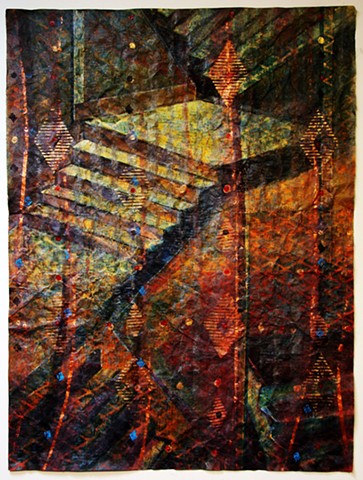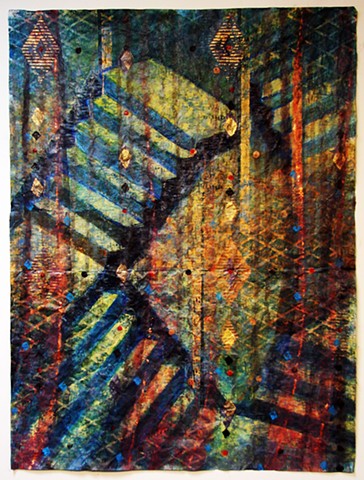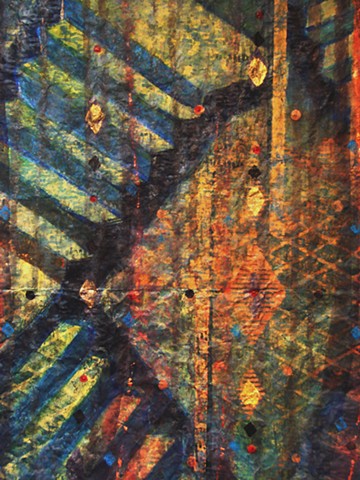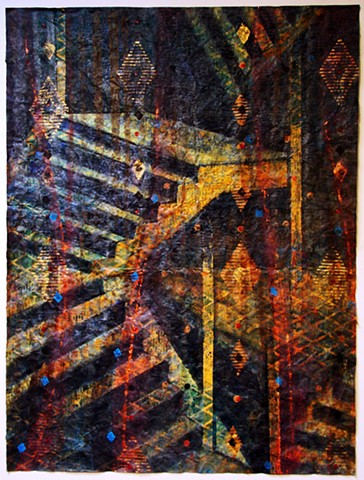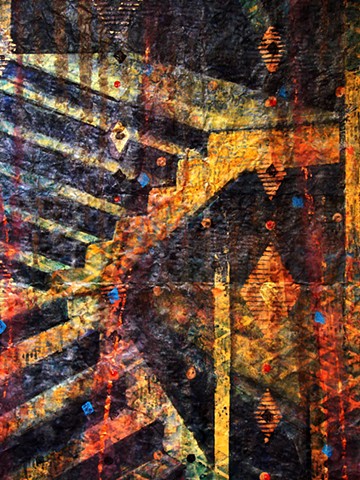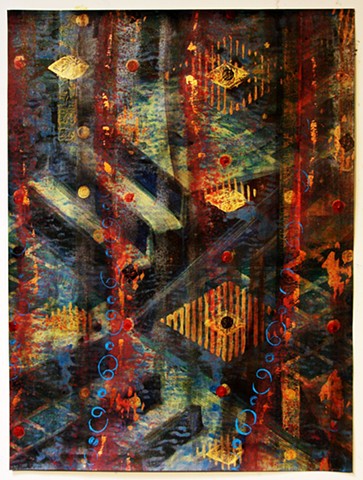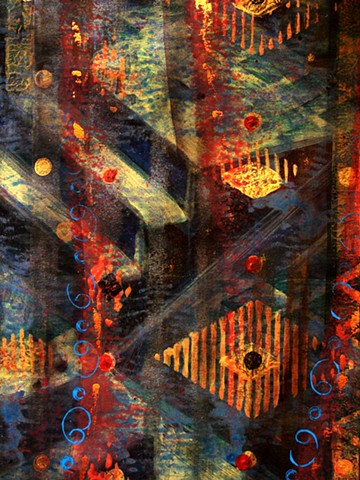Seizes the Beginning - Sees the End
We enter, we shout
And that’s life.
We shout, we go out,
And that’s death.
- Samuel Becket
from the stage play “Breath”
These paintings began with thoughts about too much to do and too little time to do it all in. In other words, like many of my paintings, it is an essay about time.
The first images used as a reference or starting point were photos of art deco ironwork railings as they graced curving stairways that turned back and forth, rising in late 19c French and Belgian interiors. But, the size and format of my paper wouldn’t allow for a continuous staircase that turned on itself more than once. So, I broke up the units into four sets that left the focal group of two, turning at a landing, and then ending with the second landing simply stopping as an overhang into the space. Since tread and rise are the rhythm throughout, there is a consistency or continuity to the stairs despite their being disjointed and ramping about the space at different angles of ascent. Intention and invention are expected to work together when I paint, and this is a good example of when my expectations were met. Clarity is added in layers and in time, if the paintings are ‘successful’ visually and thematically, specific movements, metaphors and related ideas become their content.
A friend is awaiting news of his own best friend’s imminent final departure, and while working on these paintings, I made an attempt to recognize and accompany them. As the darkness that surrounded the various stairways began to establish an area that could be taken as a portion of an infinitely larger space, the way in which the landings became like diving platforms, also then represented that final step-off into the future that awaits us all. Remembering Beckett’s quote from “Breath”, a visual image had emerged that might, in a sense, illustrate it. This became the first and background layer of the paintings’ meaning.
For the second layer, as part of the foreground, I began thinking about the “Flower Garland Sutra”:
"There is a net of three dimensions, vast and wide stretching in all four directions throughout the universe. At each point that the string meets another point of the net there is a jewel, and this jewel reflects in all the other jewels of the entire net, and further that reflection too is reflected in all the facets of all the other jewels.
No single part of the net can be independent of the rest; a single movement of the net in place will affect, in some way, the most distant part of the net or universe. The all is reflected in the one, and the one in the all."
and imagining its web as a kind of curtain. The curtain is composed of a loose grid of diamond shapes, and beads or dots, over which a second veiled curtain hangs and moves as if it had just been opened and closed. Time and distance are made tangible by the layers moving back into the painted space.
We land on the stairs and climb. We turn a corner and descend. The curtain we have passed through is still in view, but we can no longer go back through it. Somewhere as we climb, all our forward movement is checked by a blind landing that seems to entice us without any real promise. We might jump and land on another stair or, we might leap and never land. When do we arrive at this point, and what might compel our decision? Surely, we have considered this before, but what now and to where?
Like painted stage scenery, an illusion is established in these paintings, but the players and the script are not provided. We will – as we always do – have to ‘make it up’.
Answers are everywhere and nowhere. Keep moving.
